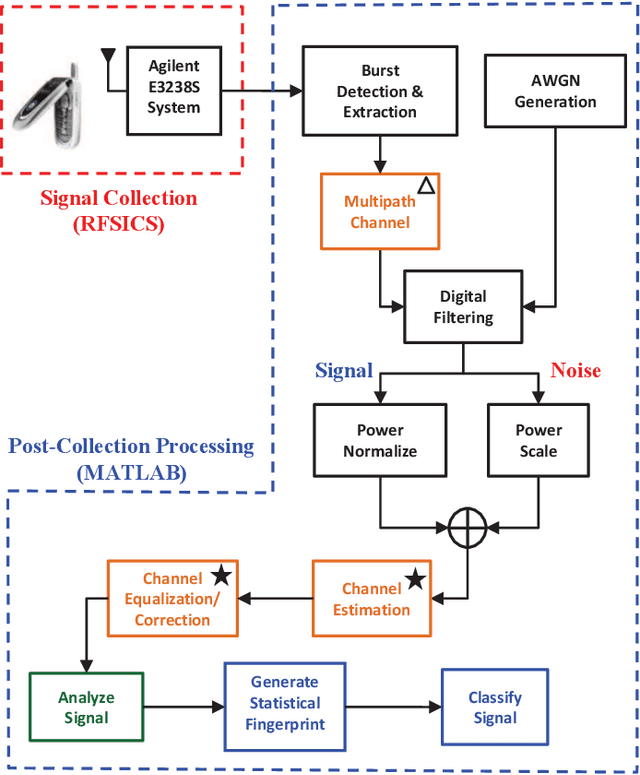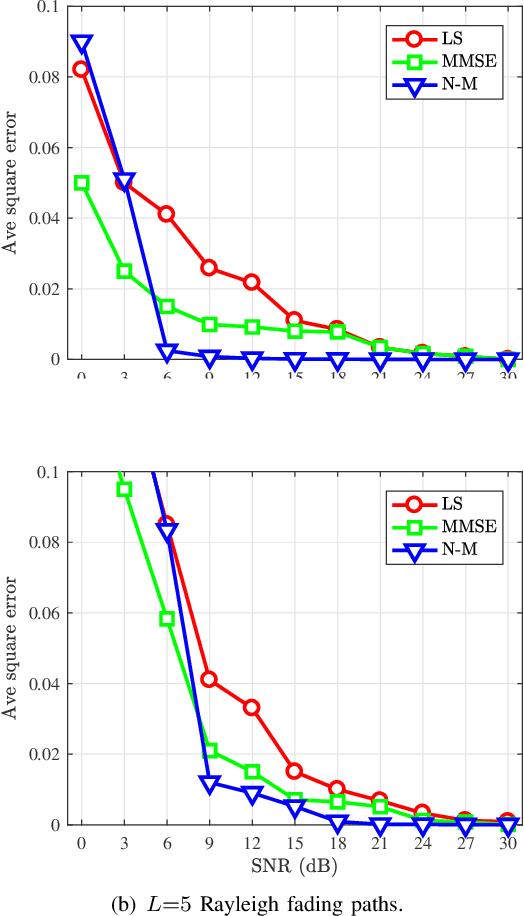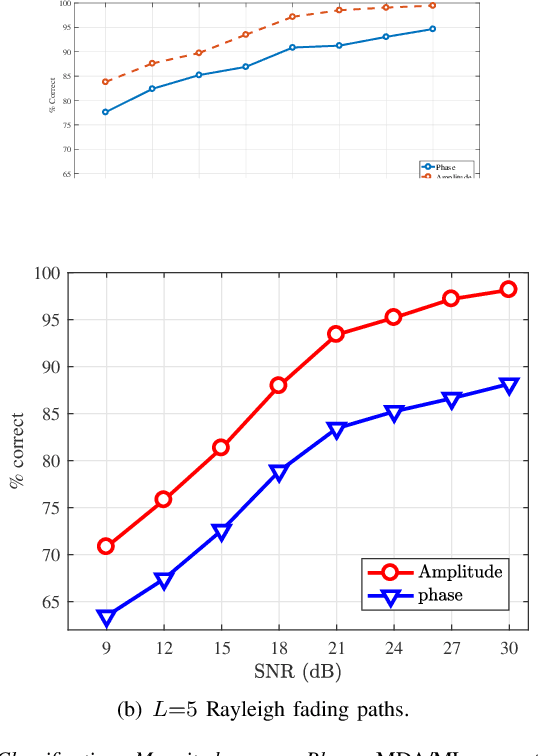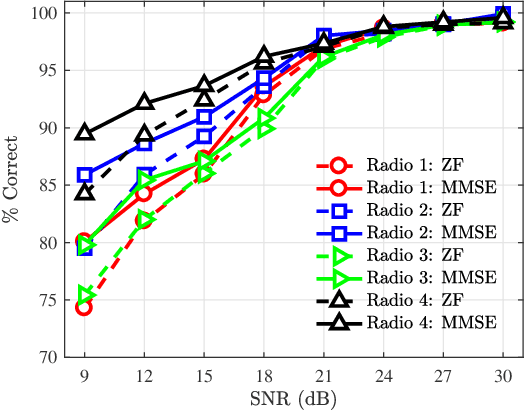Donald Reising
Pre-print: Radio Identity Verification-based IoT Security Using RF-DNA Fingerprints and SVM
May 19, 2020



Abstract:It is estimated that the number of IoT devices will reach 75 billion in the next five years. Most of those currently, and to be deployed, lack sufficient security to protect themselves and their networks from attack by malicious IoT devices that masquerade as authorized devices to circumvent digital authentication approaches. This work presents a PHY layer IoT authentication approach capable of addressing this critical security need through the use of feature reduced Radio Frequency-Distinct Native Attributes (RF-DNA) fingerprints and Support Vector Machines (SVM). This work successfully demonstrates 100%: (i) authorized ID verification across three trials of six randomly chosen radios at signal-to-noise ratios greater than or equal to 6 dB, and (ii) rejection of all rogue radio ID spoofing attacks at signal-to-noise ratios greater than or equal to 3 dB using RF-DNA fingerprints whose features are selected using the Relief-F algorithm.
Preprint: Using RF-DNA Fingerprints To Classify OFDM Transmitters Under Rayleigh Fading Conditions
May 06, 2020



Abstract:The Internet of Things (IoT) is a collection of Internet connected devices capable of interacting with the physical world and computer systems. It is estimated that the IoT will consist of approximately fifty billion devices by the year 2020. In addition to the sheer numbers, the need for IoT security is exacerbated by the fact that many of the edge devices employ weak to no encryption of the communication link. It has been estimated that almost 70% of IoT devices use no form of encryption. Previous research has suggested the use of Specific Emitter Identification (SEI), a physical layer technique, as a means of augmenting bit-level security mechanism such as encryption. The work presented here integrates a Nelder-Mead based approach for estimating the Rayleigh fading channel coefficients prior to the SEI approach known as RF-DNA fingerprinting. The performance of this estimator is assessed for degrading signal-to-noise ratio and compared with least square and minimum mean squared error channel estimators. Additionally, this work presents classification results using RF-DNA fingerprints that were extracted from received signals that have undergone Rayleigh fading channel correction using Minimum Mean Squared Error (MMSE) equalization. This work also performs radio discrimination using RF-DNA fingerprints generated from the normalized magnitude-squared and phase response of Gabor coefficients as well as two classifiers. Discrimination of four 802.11a Wi-Fi radios achieves an average percent correct classification of 90% or better for signal-to-noise ratios of 18 and 21 dB or greater using a Rayleigh fading channel comprised of two and five paths, respectively.
 Add to Chrome
Add to Chrome Add to Firefox
Add to Firefox Add to Edge
Add to Edge